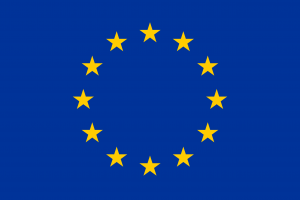EU Statement - Preparatory Committee for the UN Conference to Review Progress in the Programme of Action on Small Arms and Light Weapons: Implementation of the International Tracing Instrument
Final - 15 February 2024
Madam Chair,
- I have the honour to speak on behalf of the European Union and its Member States.
The Candidate Countries North Macedonia*, Montenegro*, Serbia*, Albania*, Ukraine, the Republic of Moldova, Bosnia and Herzegovina* and Georgia, and the EFTA countries Iceland and Norway, members of the European Economic Area, as well as San Marino align themselves with this statement.
- The EU welcomes today's opportunity to assess the state of play in the implementation of the International Tracing Instrument. The EU is a convinced supporter of the ITI. We consider it as one of the most important achievements of the UN Programme of Action and an essential tool in the fight against diversion, un-authorised re-export and the illicit trade in SALW.
- The ITI provides the only global standard on how and where to mark SALW. Through the ITI all States have committed themselves to mandatory marking and record-keeping of SALW and to cooperate internationally with the tracing of seized and collected illicit SALW. The ITI is therefore a unique and essential component of the capacity of states to identify and fight arms trafficking. It is the responsibility of the Review Conference to make sure that the ITI can continue to deliver this essential contribution, also in the light of new developments in SALW manufacturing, technology and design, focussing on modular and polymer frame firearms as well as 3D-printing.
- In relation to this, the EU is concerned that the ITI does not properly address the developments in manufacture, technology and design of SALW like modular and polymer frame weapons. The EU is therefore supporting the establishment of an open-ended technical expert working group on the implementation of the UN PoA and its ITI with regard to new technologies in SALW.
- The absence of a global standard on how and where to mark modular weapons risks gradually undermining the capacity to trace these weapons if there is no agreement on what constitutes the essential component which should bear the marking. This process should also reflect other implications of developments in SALW technology and design, including increased use of polymers, 3-D Printed Weapons, and developments in marking, recordkeeping and tracing.
- Given the limited space that is fit for durable marking on SALW with polymer frames, the increased use of polymer frames complicates the application of markings that are required or recommended by the ITI, including import markings. The EU is therefore of the view that the outcome document should promote import marking, if possible, at time of manufacture.
- Developments in SALW technology and design do not only pose challenges for the implementation of the ITI. They also offer opportunities for more effective marking, recordkeeping and tracing, and hence more secure control of SALW in general.
- The EU and its Member States have been flagging this issue since BMS4 in 2010, already fourteen years ago. The issue is real and well documented. All stakeholders, including law enforcement agencies and industry, have flagged it since many years.
- Finally, the EU promotes the tracing of SALW in conflict affected areas. Conflict tracing can contribute to the identification and containment of illicit arms flows and trafficking channels into conflict zones and to the reduction of violence. UN and regional peace support operations may take up a role in the collection, recording, tracing and destruction of illicit SALW and their ammunition, in accordance with their mandates and resources, where possible, in cooperation with UN expert groups in charge of monitoring UN arms embargoes. Conflict tracing can also be supported through capacity development for local security and law enforcement agencies for tracing and investigation, in combination with promotion of the iARMS database of Interpol and other relevant databases; and by supporting initiatives such as iTrace by Conflict Armament Research.
- States should call for increasing capacities to monitor and enforce arms embargoes, for example by supporting the work of UN panels that monitor arms embargoes.
Thank you Madam Chair.
_______________________________
* North Macedonia, Montenegro, Serbia, Albania and Bosnia and Herzegovina continue to be part of the Stabilisation and Association Process.
